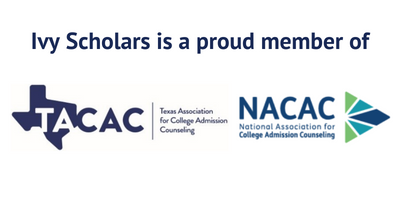The Common App is how most college applications are handled, with hundreds of thousands of students applying using the site every year. Thus, any change to the Common App, even a relatively minor one, can have major reverberating effects through the admissions landscape, as it changes what is required of students and what information colleges have access to.
This year, the Common App added a new, albeit small, section: Responsibilities and Circumstances. In this article, we’re going to look at what this section is, why it was added, how you should fill it out, and how colleges will make use of the information in it. As always, our goal is to help you understand this overly complicated process, and give you the best shot at getting into your top choice school. Let’s get started!
What is the Responsibilities and Circumstances Question?
This question has been added to the Activities and Honors section of the Common App. It is under its own tab, which you can see in the sidebar:

This is really two questions, both multiple choice checkboxes. The first is on household or family responsibilities you have. This lists a number of common ones, and has an Other option as well. Selecting Other gives you a text box where you can give further details about your household duties and responsibilities. You can enter a maximum of 150 characters into this text box; this is not meant to be an essay.
Here is the full list of what responsibilities this asks about. You are encouraged to select all of these which apply to you. If you had none of these responsibilities (or had them but for less than four hours per week), you may simply select “None of these.”

The circumstances question is directly below, and is quite similar. It lists circumstances which you might have experienced which would impact your education. Again, there is the option to select “None of these” if none of these circumstances applied to you. There is no “Other” option in this case. Here is their list of circumstances you can select from:

Both of these questions are required, meaning you must answer them to complete your Common App.
What is the Purpose of the Responsibilities and Circumstances Section?
Some of you might know this already, but the Common App already had a dedicated section where students could discuss their household responsibilities and circumstances: the Additional Personal Information Section. So why add a new section? We believe there are two primary and interconnected reasons:
- Many students were not making use of the Additional Info section
- Colleges really want to know this information
The first problem is quite simple; most students didn’t understand the purpose of the additional information section, or were hesitant to fill it out. This is something we encountered frequently with our students, and is not helped by the Common App itself. While they do have a page discussing it, on the actual application, the directions are vague.
Now, this vagueness is intentional and perhaps necessary; there is a lot of possible information students might want to share. But this same lack of specificity often leads to students not sharing information about their responsibilities or circumstances, even when it is incredibly relevant to their application.
Colleges Want This Information
Colleges, especially top universities, want to examine applicants in context. That is, they want to understand not just what you have accomplished, but the circumstances in which you accomplished it. Scoring a 1550 on your SAT and being your school’s valedictorian is far more impressive if you have to work to help support your family than if you were able to afford private tutoring.
This is especially true now, as many colleges are looking to promote economic and background diversity in place of racial diversity, due to the Supreme Court ending the use of affirmative action in admissions. This doesn’t mean you are more likely to get in if you did have these responsibilities or circumstances, but that they can color how admissions officers read and evaluate the rest of your application.
Of course, colleges only know what students tell them, and as we saw above, students often were not telling them these absolutely vital pieces of information. In this context then, the actions of the Common App make perfect sense; the colleges had a specific need for particular information, and the Common App is providing it.
How Should You Answer the Responsibilities and Circumstances Questions?
This is a required question, so you are going to need to answer it; the question then is the best way to do so. The first, and most important thing, is to be honest. Do not downplay what you have done, but also do not overexaggerate. Give an accurate report of what responsibilities you held, and what circumstances of those listed impacted you.
Now, this is merely a bulleted list; there is no room for detail or nuance in your answers (save for the Other response, but 150 characters leaves little room for nuance). To that end, if you do enter anything besides “None of these” for either question, you should also explain these circumstances in your additional information section.
Now, colleges likely hoped you would have included this information in that section anyway, but we know students weren’t doing that. Now that you are required to provide this much-needed context, however, it is good to explain it, so colleges can fully understand what you did and how the circumstances of your life impacted your education. Note that these are not essays, and need not be overly long; just enough to give admissions officers a proper understanding.
The New Additional Info Section
Before we continue explaining how to explain yourself in the additional info section, we need to break down how the Common App has decided to change the Additional Info Section. This is a minor update, but in combination with the Responsibilities and Circumstances question, should make the section more easily usable for students.
Previously, this section was a single box allowing for up to 650 words to detail any circumstances you thought admissions officers needed to know. The length of this, and the vagueness of the instructions, caused confusion for some students. Many left it blank who shouldn’t have, and others submitted essays colleges didn’t want.
This has been replaced with two distinct questions. Here is the first:

This then gives you a yes/no selection. Choosing yes gives you a text box, where you can enter up to 350 words explaining these circumstances. This is reasonable; I have only ever seen one student who ever needed to use the full 650, and he was an exceptional case. This new format also directly parallels the Responsibilities and Circumstances question. This is clearly intentional, guiding students who entered information there to elaborate on it further here.
The second question now asks about additional qualifications that you have that you have not otherwise been able to talk about:

This is intended for students who have more than ten activities or more than five honors. These are quite rare, and certainly not expected by colleges, but they do exist. Selecting yes here gives you access to a text box, where you may spend up to 300 words describing your additional achievements.
These should be formatted as they are on the activities list for consistency’s sake. You can go into some additional detail if need be, but this is not a place for essays. Simply share the relevant details with colleges, so they can fully understand who you are and what you have done.
Writing About Responsibilities and Circumstances
So now that you know how the additional personal information section works, the trick is actually writing about what you have done, and making sure admissions officers have all the requisite details. To help you understand what this looks like, here is an example from a past IS student:
In 6th grade, my mom was diagnosed with colon cancer, which has led to a series of changes throughout our household. My mom quit her job, and we transitioned to a single-income household with my dad taking on more jobs to mitigate the added financial strain while I stepped up to take on many of the responsibilities my mom had previously managed. These tasks include cooking meals for my family, attending hospital visits with my mom, and helping my dad in his side business.
This is not long, nor does it have to be. It states the facts as they are, and gives admissions officers context they would otherwise lack. Your own response should add any necessary details to elaborate on the context of your responsibilities. You should also include a note of how long you spent working at them, how much of your time they occupied. This is true regardless of the commitment; a few hours once a week or a significant portion of each day.
If your responsibilities or circumstances had a direct impact on your school work or performance, or interfered with your ability to take part in other activities or extracurriculars (say you had to help in your family’s business instead of after-school clubs), then this too should be stated. Colleges want to see students who actively engage with their communities, but won’t penalize you for your circumstances or those things beyond your control.
Further, any successes you do have will be viewed more favorably because of the challenges you faced in achieving them. You should not exaggerate your struggles, but give an accurate reporting of facts. Colleges know only what you tell them, so make sure you tell them enough that they understand who you are and the circumstances you are working with.
Final Thoughts
The Common App is not a perfect system, but it is a wonderful tool for students, centralizing and streamlining much of the application process. While changes can be an issue, this is one we think is a good idea, since it better allows students to convey their unique circumstances and experiences to colleges. This helps both students and admissions officers, without adding burdensome requirements to already stressed and overworked high school students.
College applications are not always straightforward, and students often struggle with knowing what admissions officers want; this change reflects that. One of the best ways to navigate a new and challenging situation, however, is to have an experienced guide, and that’s where Ivy Scholars can help. We have a depth of experience helping students tell their unique stories and perspectives to admissions officers, and in so doing gain admissions to some of the best schools in the country. Schedule a free consultation today to learn more about how we can help you.








